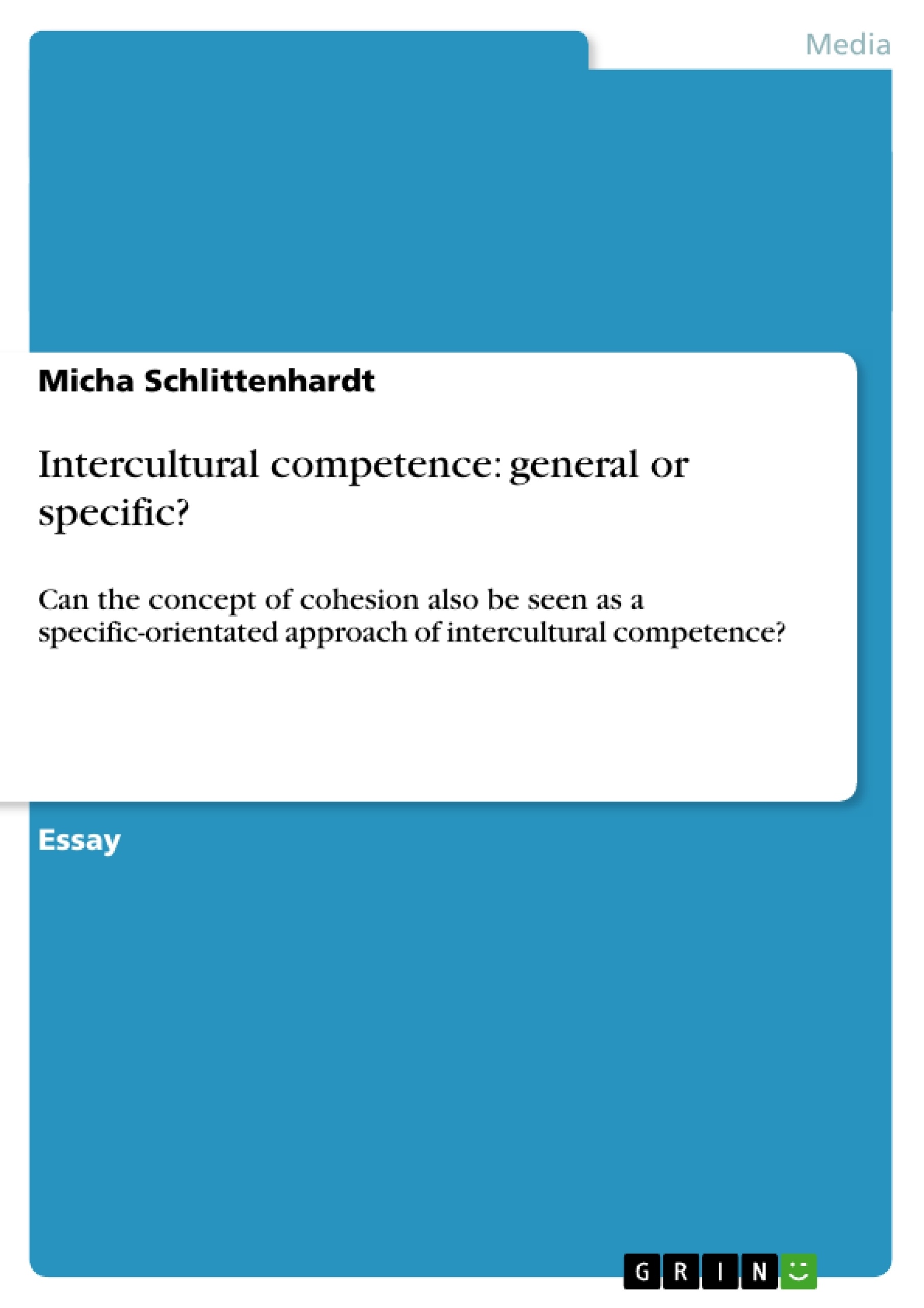The debate on the concept of Intercultural Competence became a wide field of interest in recent years which could be especially seen on the discourse in the German-speaking world (Cf. Bolton, 2006; Rathje 2007). Furthermore, it gained importance in society due to the development towards an intercultural society in Germany and the question for integration (Cf. Seifert 2012). Business sector and governments are therefore in search for Intercultural Competence in order to counter these issues (ibid.).
The debate on the concept of Intercultural Competence became a wide field of interest in recent years which could be especially seen on the discourse in the German-speaking world (Cf. Bolton, 2006; Rathje 2007). Furthermore, it gained importance in society due to the development towards an intercultural society in Germany and the question for integration (Cf. Seifert 2012). Business sector and governments are therefore in search for Intercultural Competence in order to counter these issues (ibid.).
The development of an Intercultural Competence construct
To define the construct of Intercultural Communication different approaches were made. Beginning with the list model of three major dimension: affective, therefore depending on the capability of adaption and the individual personality; conative, depending on situational behavior and communication, and the cognitive dimension (Cf. Gertsen 1990 ). These lay foundation to the development of models to accommodate the construct of Intercultural Communication. The structural model (Cf. Bolton, 2006) of Intercultural Communication, containing the aforementioned dimensions based on personal capability towards a situational based (Cf. Thomas, 2003) counter model. Both find their conclusion in an interaction model of Intercultural Competence, where situation, through context, and personality play a major role. Furthermore, the model of Cultural Intelligence tries to conclude these frameworks to a model of the capability of adaption in a specific situation. Moreover, can this construct be set into three different levels on which the construct is depending: the motivational level, the level of action and the level of reflection.
These approaches inherit the predominant coherence-based definition of culture, which describes the interaction between two differing cultures as an intercultural frame and therefore gives name to the concept. By seeing the personality of the individual as culturally based in respect of a coherence-based foundation, Intercultural Competence has to be examined in a cultural specific scope.
[...]
- Quote paper
- Micha Schlittenhardt (Author), 2012, Intercultural competence: general or specific?, Munich, GRIN Verlag, https://www.grin.com/document/268140
-

-

-

-
Upload your own papers! Earn money and win an iPhone X. -

-
Upload your own papers! Earn money and win an iPhone X. -

-
Upload your own papers! Earn money and win an iPhone X.

